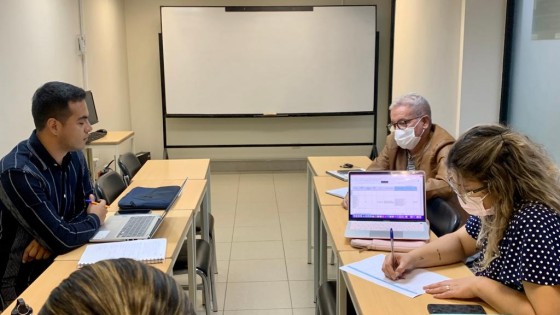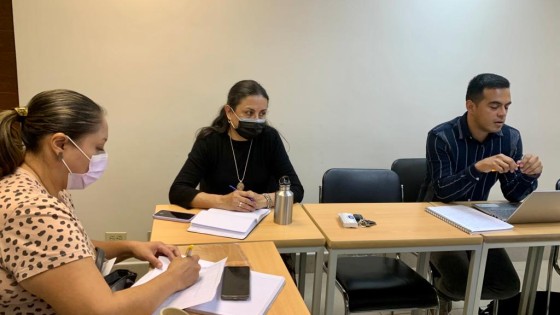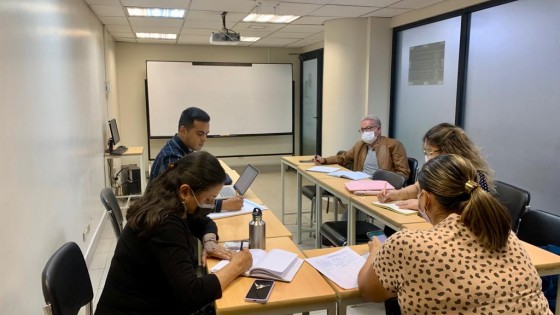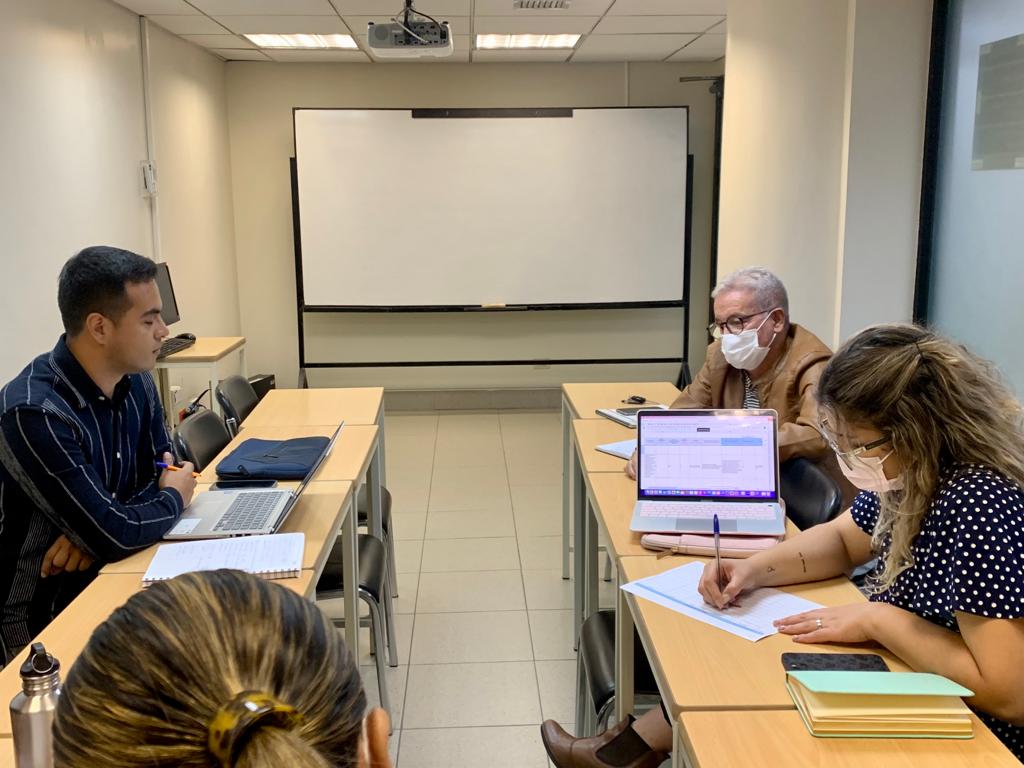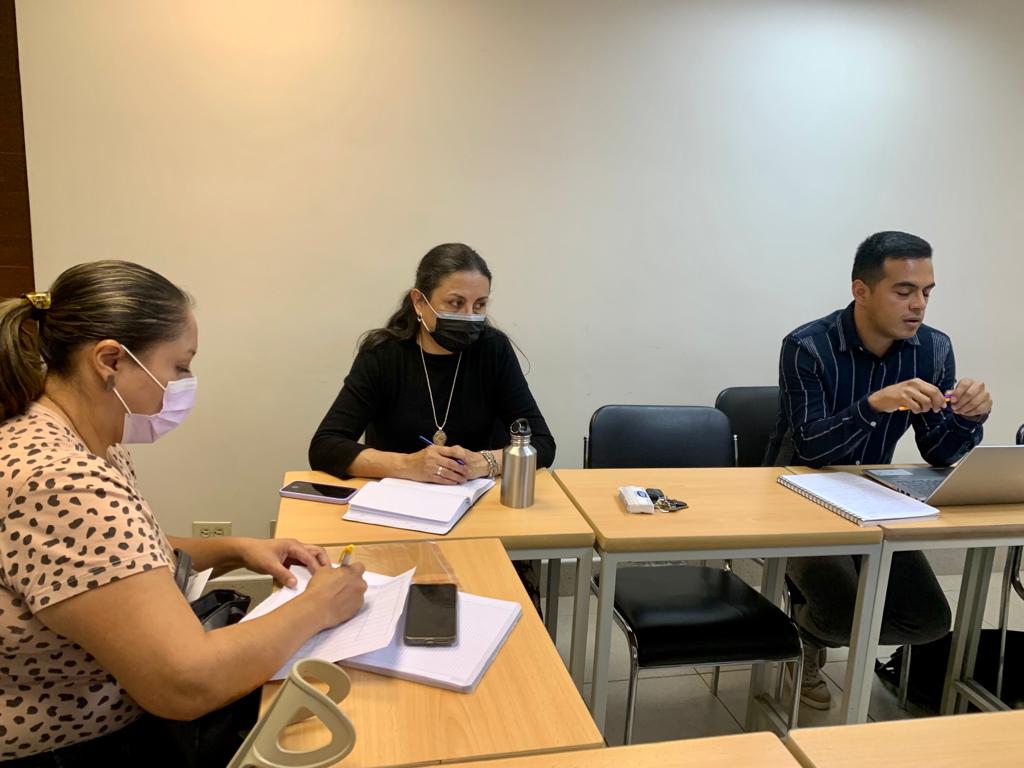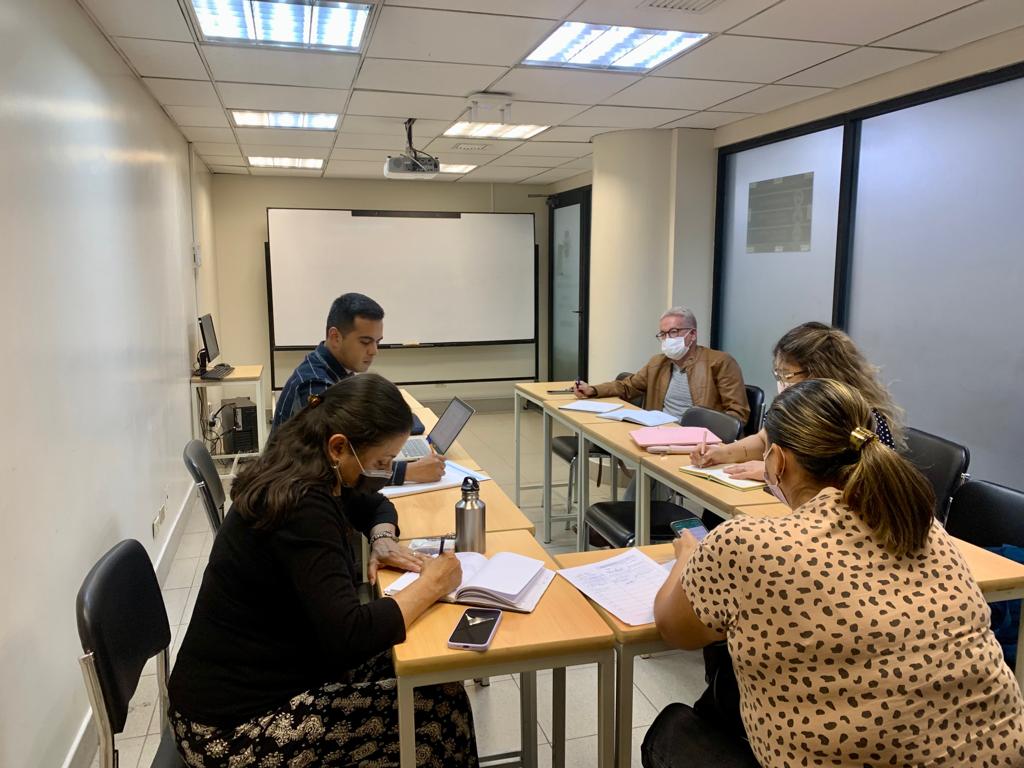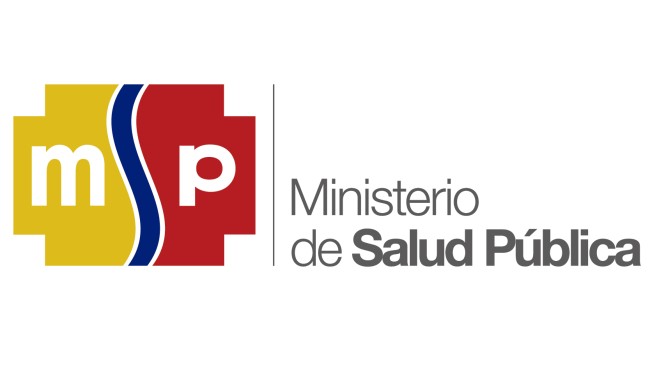Proyecto Tele psiquiatría en Atención Primaria para los Sectores Rurales de Pichincha
Durante el COVID-19, a través de una colaboración internacional entre Northwell Health y la USFQ, surgió un programa de telepsiquiatría en respuesta a las necesidades urgentes de salud mental identificadas en los centros de salud en Ecuador. El programa, que presta servicios en los distritos D1708 y D1709, apoya a poblaciones desfavorecidas a través de servicios virtuales integrados de salud mental. El ingreso local promedio es de menos de $3 por día, y este programa se ha enfocado en personas que no podían acceder a estos servicios. Sin costo para el paciente individual, la intervención incluye estudiantes graduados de medicina USFQ, residentes de psiquiatría Northwell Health y psicólogo del centro de salud. El programa ha brindado consultas al menos a cuatro pacientes una vez por semana utilizando Internet para ampliar el acceso a servicios de salud mental. El programa comprende cuatro estrategias principales: identificación y cribado de pacientes que requieren evaluación psiquiátrica; contacto inicial con pacientes para consentimiento, coordinación y explicación del programa por parte de los estudiantes USFQ de postgrado; consulta telepsiquiátrica realizada por residentes de Northwell Health; y la creación de un plan de tratamiento continuo
Implementar un modelo demostrativo de atención psiquiátrica a pacientes de sectores rurales del cantón Quito
3. Salud y bienestar
Objetivo 3: Garantizar una vida sana y promover el bienestar para todos en todas las edades
17. Alianzas para lograr los objetivos
Objetivo 17: Revitalizar la Alianza Mundial para el Desarrollo Sostenible
Los trastornos de salud mental son una de las principales causas de discapacidad en todo el mundo, particularmente en poblaciones vulnerables (OMS, 2020). En América Latina, las enfermedades de salud mental representan al menos un tercio de los años perdidos por discapacidad, siendo la depresión una de las más comunes entre ellas (Jiménez-Molina et al. 2019). Se estima que en Ecuador la discapacidad por trastornos de salud mental alcanza el 17% (OPS, 2018). La causa fundamental de esto podría ser el acceso limitado a los servicios de salud mental en los países de ingresos bajos y medios (PIMB) debido a la baja inversión de los gobiernos, los escasos profesionales de la salud mental y las clínicas de salud exclusivas para ello, los recursos y la experiencia insuficientes del personal. en los consultorios de salud, y la mala promoción y prevención de las enfermedades de salud mental. En Ecuador, estos problemas surgen del sistema educativo con una casi inexistente residencia que ofrece la especialidad específica y una insuficiente preparación durante la carrera de medicina. En el sistema educativo ecuatoriano solo la medicina familiar recibe formación en salud mental, sin embargo su capacidad en el manejo del diagnóstico, la psicoterapia y la medicación psicotrópica no es tan amplia como la de un especialista (Baena VC, 2018). Como se mencionó anteriormente, la salud mental es un enorme asunto de salud pública y durante la pandemia de COVID-19 se vio profundamente afectada, especialmente en las poblaciones vulnerables de los países de ingresos bajos y medianos. Un informe utilizando herramientas validadas mostró que durante la pandemia de COVID-19 en 2020 en 3 estados del Ecuador, el 59,2% de las personas presentó algún nivel de ansiedad y el 54,8% de las personas presentó depresión (Velastegui et al. 2020).
Teniendo en cuenta que el 80% de la población mundial vive en LIMC, se debía implementar una solución para cerrar la brecha de tratamiento en grupos socioeconómicamente desfavorecidos (Jiménez-Molina et al. 2019). La solución más lógica y viable durante este tiempo ha sido la tecnología digital. La tecnología digital se refiere a servicios como internet, computadoras, teléfonos móviles, tabletas y/o mensajería de texto. Se estima que al menos el 80% de las personas que residen en países de ingresos bajos y medianos tienen teléfonos móviles, pero solo la mitad de ellos tiene acceso a Internet (Fu, Z et al. 2020). En Ecuador, un informe del Ministerio de Telecomunicaciones estima que en 2012 60 de cada 100 personas tenían acceso a Internet, y que este número ha aumentado mucho más durante los últimos 3 años (Ministerio de Telecomunicaciones, s.f.). Otros informes mostraron la desigualdad en el acceso a las tecnologías digitales, indicando que ni siquiera la mitad de la población tiene acceso a internet en sus casas; siendo la población rural la más afectada. Un hecho interesante es que aún cuando no contaban con internet en sus hogares, se observó un crecimiento de los teléfonos inteligentes en la población.
Un grupo con el que se trabaja mucho es con la población adulta mayor, el enfoque ha sido brindar apoyo psicoterapéutico con el apoyo de estudiantes de psicología especialmente a aquellos diagnosticados de depresión.
Además se ha trabajado con promoción de la salud infantil con población escolar.
El programa, que presta servicios en los distritos D1708 y D1709 del Distrito Metropolitano de Quito, apoya a poblaciones desatendidas y desfavorecidas a través de servicios virtuales integrados de salud mental para personas financieramente vulnerables. El uso de la telemedicina para brindar servicios de salud mental es un mecanismo integral e innovador para mejorar el acceso y reducir el estigma. El ingreso local promedio es de menos de $3 USD por día, y este programa ha ampliado el acceso para personas que anteriormente no podían acceder a servicios de salud mental. 1. A los pacientes para brindarles tratamiento y/o seguimiento psiquiátrico cuando acudan a los departamentos de salud mental de los consultorios de salud del Ministerio de Salud, y que en circunstancias normales no tengan acceso a citas o seguimientos por parte de un médico especializado. en esta área. 2. A los consultorios de salud y al Ministerio de Salud para ofrecer servicios de salud con un especialista que no esté disponible en este tipo de nivel de atención.
Adultos Mayores del club del adulto Mayor de Pifo que han sido diagnosticados y que han recibido tratamiento psiquiátrico y apoyo de profesoras y estudiantes de psicología siguiendo la metodología de Mindfulness.
Niños de 5 escuelas publicas del distrito en donde se ha sugerido trabajar implementando actividades de prevención y promoción de la salud mental, enfocando en la importancia de dormir al menos 10 horas, hacer actividad física y disminuir el consumo de pantalla.
Se atendieron 104 pacientes, de diferentes parroquias rurales del cantón Quito: El Quinche, Checa, Yaruquí, Tababela, Pifo, Puembo, Mangahuantag, Tumbaco, Lumbisí y Cumbayá. Son pacientes que por su ubicación de residencia y limitados recursos financieros, no tienen la oportunidad de acceder a una evaluación de la especialidad de psiquiatría.
